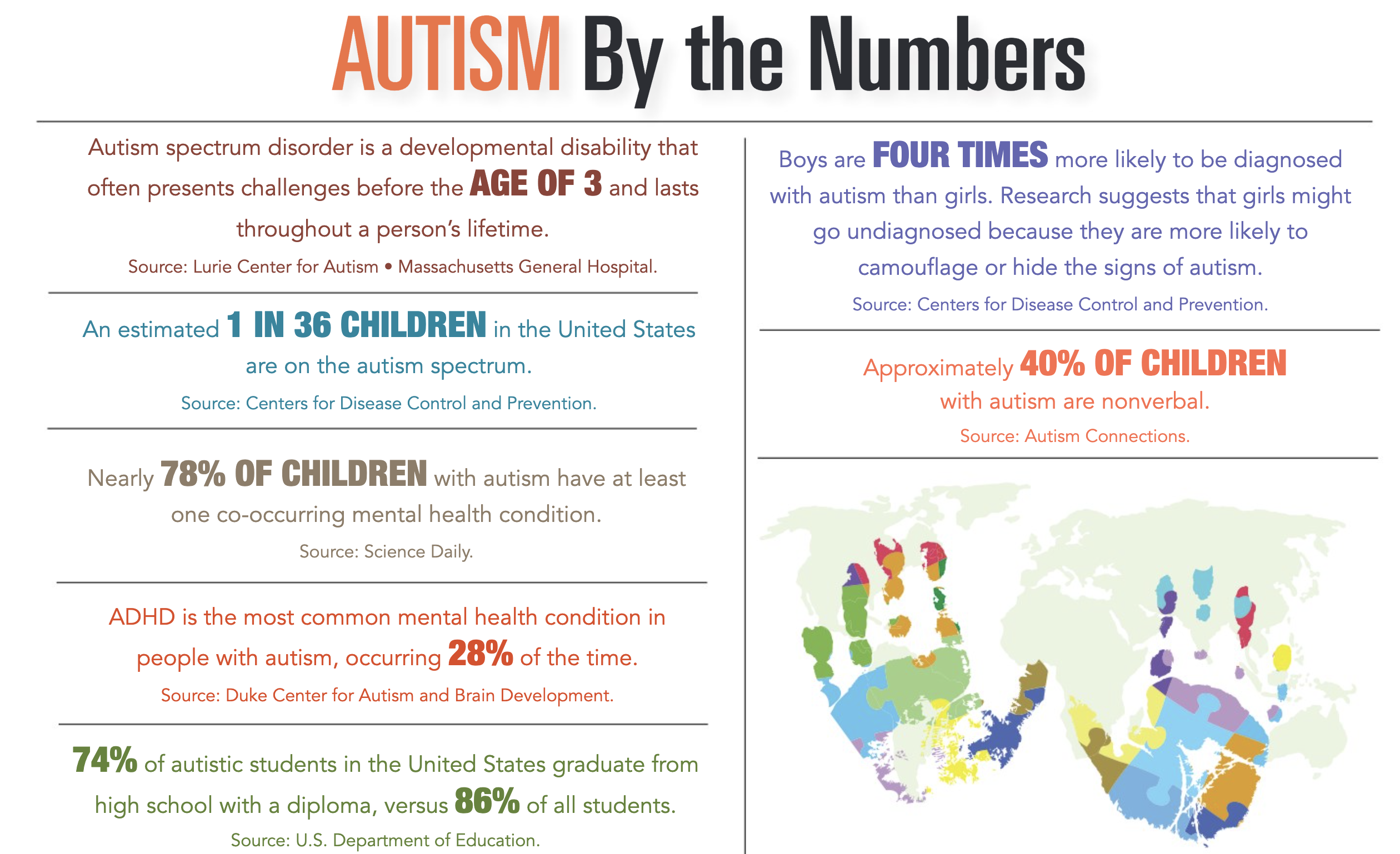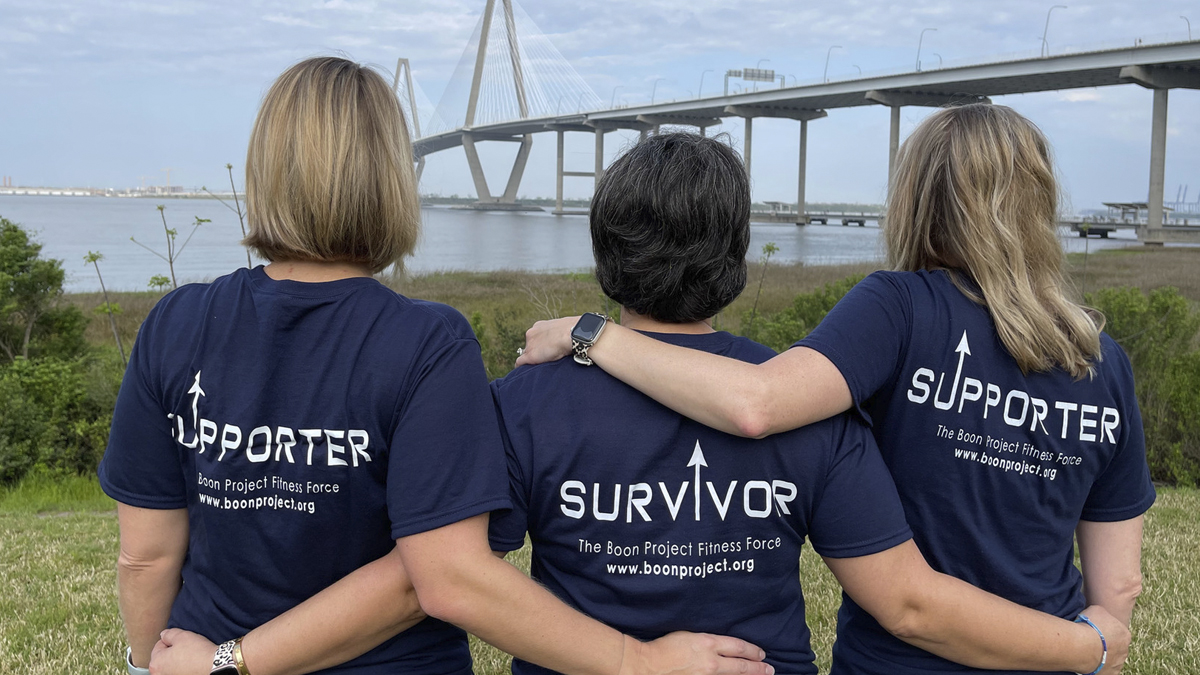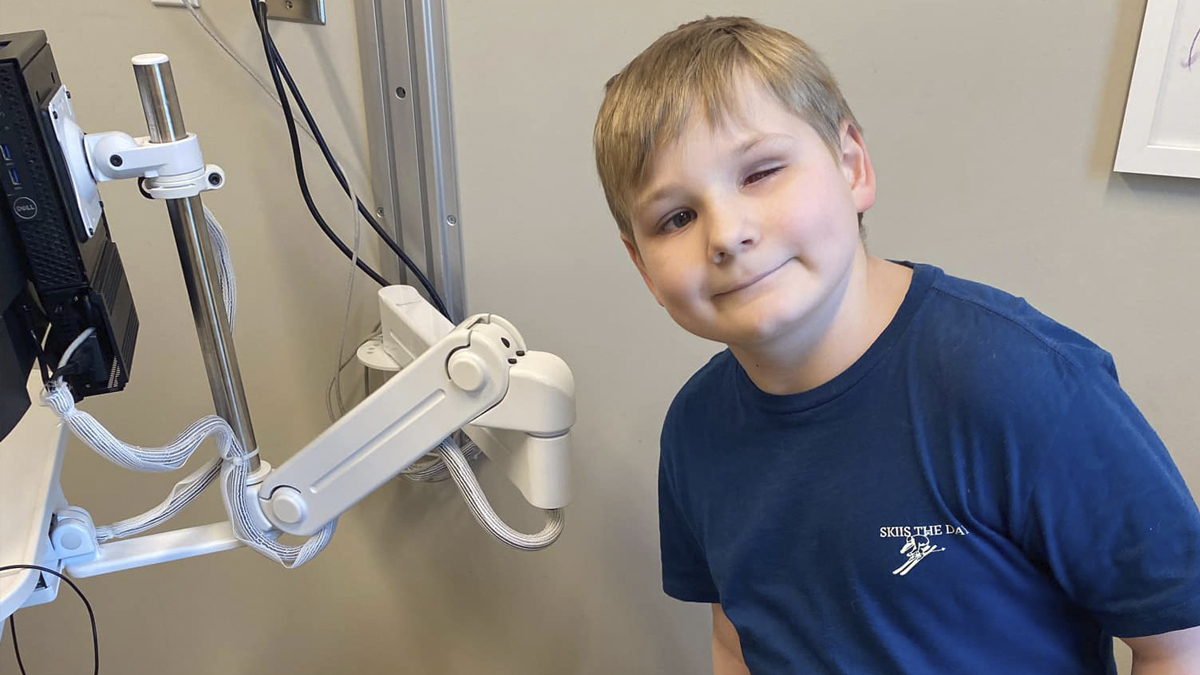Understanding Autism Spectrum Disorder
The CDC defines autism spectrum disorder as a developmental disability that can cause significant social, communication and behavioral challenges. The spectrum is sometimes referred to as a “rainbow” for its varied shades of symptoms and characteristics. According to Samantha Walker, an early interventionist at Coastal Therapy Services and mother of a child with autism, that means autistic persons present a wide range of difficulties and deficits that can change throughout their lifetime.
Recognizing Early Signs of Autism
Walker explained that visible signs of autism can begin by as early as 12 months. One symptom at that age is a child’s lack of response to their name. By 14 months, red flags include limited eye contact, delayed speech and language skills or not pointing at objects to show interest. At 18 months, traits could be lacking engagement in pretend play and repetitive behaviors.
For older children and adolescents, a signal could be social challenges such as preferring to be alone or difficulty reading or understanding body language, gestures, facial expressions or others’ feelings. Because of these behavioral characteristics called “social interaction deficits,” children with these delays likely have difficulty making and keeping friendships, Walker said.
She added that communication issues such as initiating or maintaining a conversation, taking turns talking, understanding others’ perspectives, reading others’ expressions and engaging in sarcasm can also be symptomatic. Additionally, sensory sensitivity to stimuli like loud noise, light or textures can heighten concern. Further causes for questioning can stem from restricted interests and repetitive behaviors such as hyper-focusing on specific objects such as dinosaurs, trains, shows, numbers, patterns or any other fixations. Some children may also have trouble expressing their emotions and managing “big” triggered reactions such as flapping of the hands or rocking. Walker said these soothing mechanisms can occur when an autistic person’s routine alters because they thrive on the familiar and are either resistant to or have a very difficult time with change.
Diagnostic Pathways and Where to Start
For parents of children 30 months and older who are no longer being assessed at wellness checkups, Walker suggested keeping a log of symptoms and when they happened. Then speak to a pediatrician and ask for a referral for testing. She recommended the following helpful resources for evaluating, diagnosing and therapies.
- Driftwood Testing: Contracted with Baby Net for children through age 3. All therapies and testing are free.
- Dr. Erin Beasley: Tests children under 3. Private practice—check insurance coverage.
- Dr. Renee Lake: Begins testing at age 4. Private—confirm insurance or out-of-pocket costs.
- MUSC Developmental Pediatricians: Test up to age 5 only.
Financial and School-Based Support
- TEFRA: Provides Medicaid coverage for doctor and therapy appointments for children with medical disabilities in South Carolina.
- SC Department of Disabilities and Special Needs: Offers early intervention, respite, at-home, employment and family support for ages 3–6. Child must qualify.
- Child Find: Public school evaluation program to determine eligibility for special education services and create an Individualized Education Plan (IEP).
- School Psychologists: Can evaluate for services like speech therapy, occupational therapy and assign an autism itinerant teacher.
Additional Local Resources
- Family Resource Center: Offers free parent advocacy support; private advocates like Walker are also available.
- Lowcountry ASD Foundation: Offers support groups and connections to services.
- Children’s Charity Network: Offers grants for therapies not covered by insurance.
Therapy Types That Can Help
- Speech Therapy: Language comprehension, conversation, and social cues.
- Occupational Therapy: Daily living skills, fine motor coordination, sensory processing.
- Applied Behavior Analysis (ABA): Focuses on increasing desired behaviors and reducing problematic ones.
Community Support Through Project Rex
The Medical University of South Carolina’s Project Rex offers social groups designed specifically for children with autism and their parents.
By Sarah Rose









